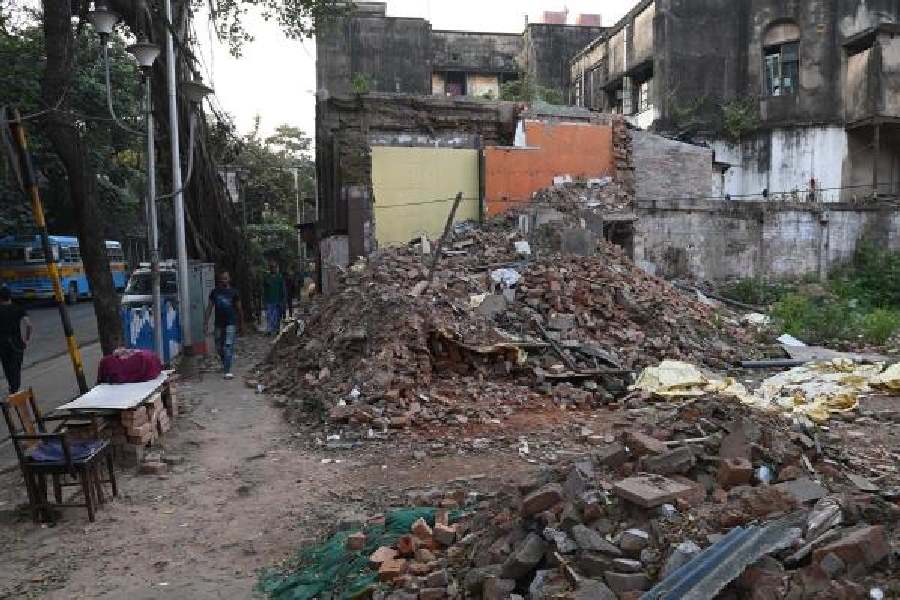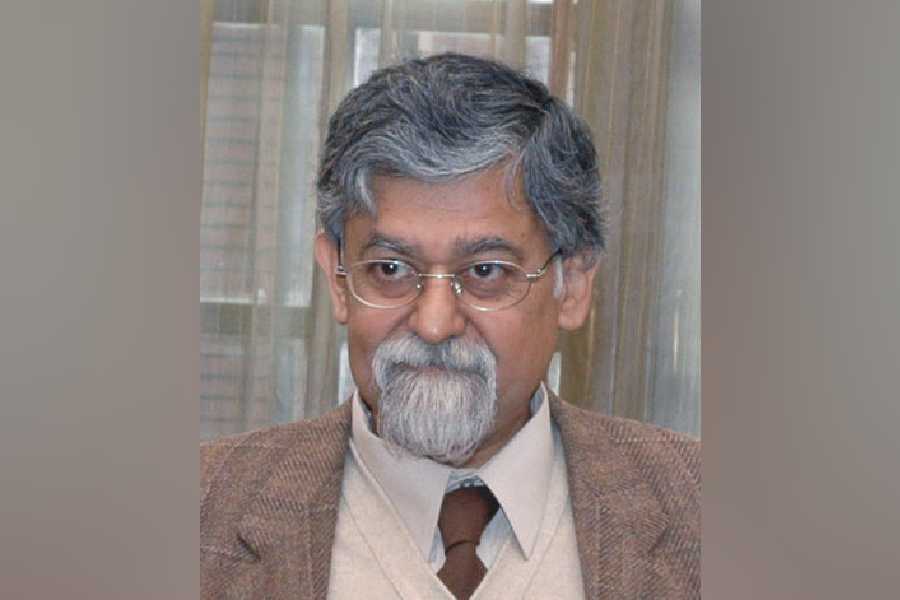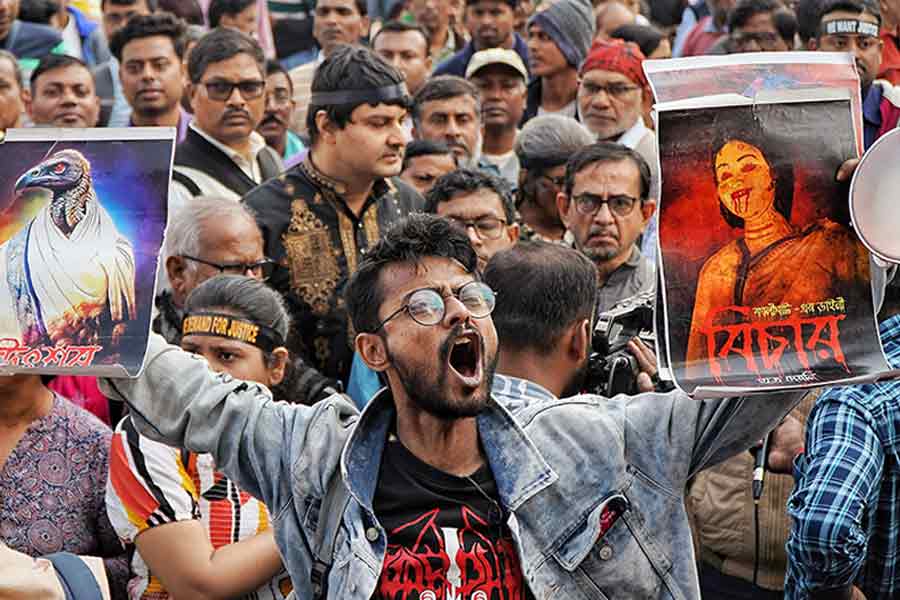Most under-construction buildings, structures being demolished and materials heaped at construction sites remain uncovered, allowing the dust to spread in the neighbourhood, at a time when the city’s pollution index is sliding down with the advancing winter.
The Kolkata Municipal Corporation (KMC), which is supposed to crack down on construction sites that do not take measures against air pollution, has only passed orders asking builders to cover the sites. The ground reality is different, residents across the city said.
A drive through parts of the city on December 5 revealed multiple construction sites where work was underway without any cover around the buildings.
Two buildings along Lenin Sarani were being demolished without any cover around the site. A payloader was working in one of the sites. Its movement and sifting of the waste kept spreading dust.
An under-construction building in Brindaban Mullick Lane, opposite Hrishikesh Park in north Calcutta, had no covers around the structure. A heap of sand was lying along the boundary of Hrishikesh Park. Cars driving past the road raised a cloud of dust.
A Jadavpur resident said she had seen several under-construction buildings in her neighbourhood, none of which had any cover around the buildings to prevent dust from spreading.
“Under-construction buildings are supposed to be covered with geotextile fabric that can absorb dust. Besides, they should also sprinkle water over the sand so that the dust does not rise in the air. Activities like rubbing the walls before painting generate a lot of dust,” said a scientist with the state pollution control board.
Anumita Roy Chowdhury, an air quality management expert, said the dust generated from construction sites added to the volume of PM2.5 and PM10, which are particulate matters less than 2.5 microns and 10 microns in size. PM2.5 can breach the blood barriers and hit any organ.
“The dust emanating from construction sites is also highly toxic depending on the nature of the activity generating the dust,” said Roy Chowdhury, the executive director of the New Delhi-based Centre for Science and Environment (CSE).
A KMC official said all builders have to give a general undertaking to adopt measures to control dust when a building permit is issued.
“We can issue stop-work notices if they do not comply with the orders,” said the civic official.
According to the National Air Quality Index, Calcutta’s air quality has dropped to “poor” and “moderate” on many days since mid-November.
Guidelines on dust mitigation measures issued by the Central Pollution Control Board (CPCB) mention that “sites of demolition activities to be cordoned off and adequate measures to reduce dispersal of dust beyond site limits” are required. The KMC, too, has issued similar orders asking builders to ensure that construction and demolition sites did not spread dust.
The CPCB’s guidelines mention that the dust generated includes “a wide range of particle sizes and material types that can cause serious health problems ranging from eye irritation, nose, mouth to affecting the respiratory system.” While the heavier and larger particles settle down, the “finer particles (usually invisible) are transported further” and can cause health hazards in areas far from the sites.











